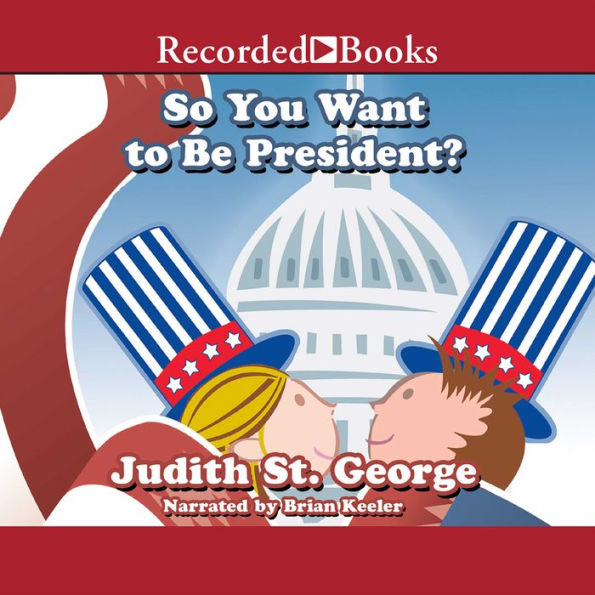On the heels of a history-making presidential election, it seems fitting that the winner of the 2001 Caldecott Medal is David Small, the illustrator for a delightfully mischievous picture book highlighting the historical triumphs and troubles of our first 41 presidents. So You Want to Be President? teams Small, a prior Caldecott Honor winner, with writer Judith St. George, the award-winning author of more than 25 children's books, including several histories. Together, they explore historical and anecdotal evidence in an effort to determine what it takes to be president. The result is an entertaining and educational book filled with comical anecdotes, comparative facts, and Small's humorous, noble, and occasionally irreverent illustrations.
St. George starts by noting some good things about being president (never having to take out the garbage or eat yucky vegetables), as well as some bad things (having to dress up all the time and be polite to everyone). She then compares and contrasts the backgrounds, qualifications, and characteristics of all 41 presidents, including such things as where they lived, how big their families were, their level of education, and the shape of their physiques. She talks about religion and rhetoric, personalities and philosophies, and tragedies and triumphs. Some of the facts are well known by most, but there are lots of lesser-known backroom tidbits, too.
Readers can learn about John Quincy Adams's skinny-dipping fiasco, Franklin Pierce's embarrassing first battle, and the specially made giant tub that was built for our portliest President, William Howard Taft. When it comes to presidential qualifications, St. George touches on some serious ones (honesty and integrity) as well as some frivolous ones (musical aptitude and dancing ability). At the end of the book is a listing of each president that includes biographical information and an insightful one-line commentary summarizing his time in office. Often it is the seemingly insignificant facts that give this book its down-to-earth appeal and make it an utter delight to read.
Adding to the fun are Small's cleverly rendered drawings -- colorful caricatures that highlight, skewer, and provide a political commentary all their own. Most of the humor will be obvious to young readers, but a few of Small's subtler details will require an older eye and a keen sense of satire, making this a fun book for readers of all ages.
--Beth Amos



